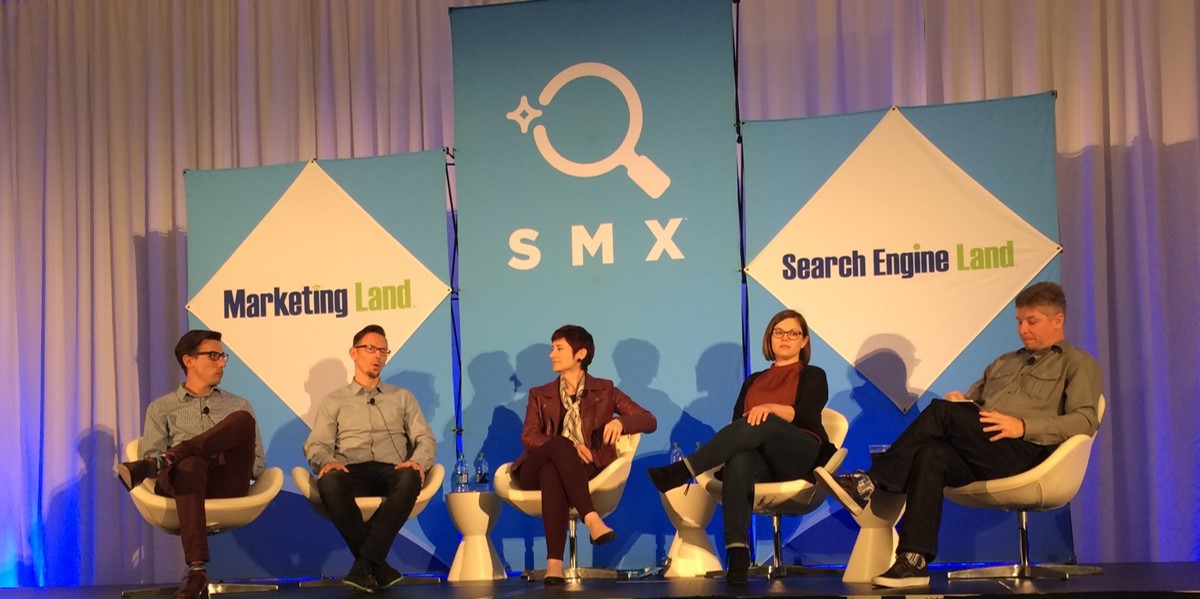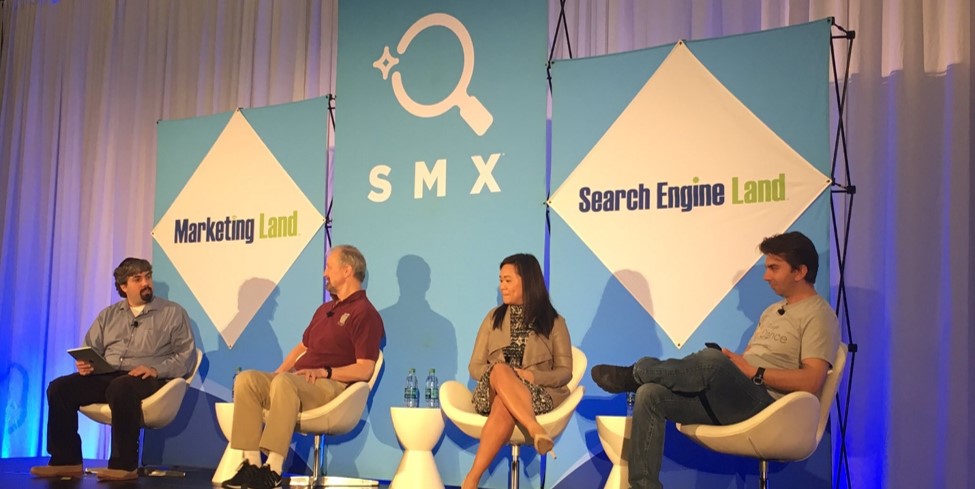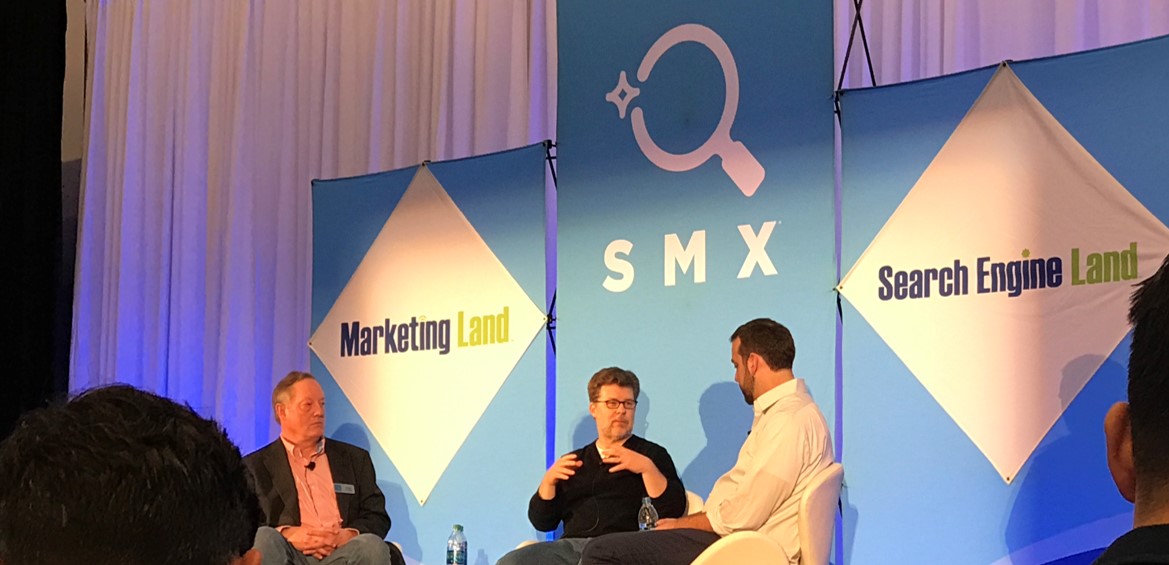Mindstream Media Group’s Allison Eckberg, Heather Ottenhausen and Stephanie Cheek are at Search Marketing Expo (SMX) West, a leading conference for search engine optimization (SEO) and search engine marketing professionals (SEM) since 2007. Mindstream’s search pros will be providing their analysis of each day’s most interesting sessions. Their recap of Day Three is below. For more coverage, check out the recaps from Day One and Day Two.
Session: Focusing on the negative: Rolling out a negative audience strategy
Speaker:
Michelle Morgan | Director of Client Services | Clix Marketing
Recap by:
Allison Eckberg | SEM Specialist | Mindstream Media Group
Mindstream Media Group focuses on helping national brands connect with relevant consumers. Sometimes, this means helping them avoid connecting with the wrong audiences, which is exactly what this session was all about. Allison Eckberg offers her analysis on how brands can reach target audiences by focusing on the negative.
When creating search marketing campaigns, the goal is to reach the target audience for your client’s product or service. However, there are many groups of people you do not want to reach. This is where applying negative audience strategies come into play.
The main objective of using negative audiences is to shape your target audience by removing unwanted groups. Here are four major reasons you might want to remove certain audience groups:
- You already know the customer. This can be alleviated with conversion rules – which tag users with platform pixels, and customer lists – which are created by uploading your CRM database.
- The audience group has poor engagement with the brand’s product or service. For example, their average time on the website is less than five seconds or they fell off of the conversion action. These audiences can be excluded within AdWords or Facebook platforms.
- The audience is not a fit for the company. If you know your target audience, you probably also know your unwanted targets too. This is extremely important because if you’re targeting too wide of an audience, it can lead to wasted ad spending.
- The audience patterns don’t match those of your target audience. Ways to avoid this include creating positive and negative audiences and reviewing the insights between the two. For example, if your brand sells luxury products and goods, it would be beneficial to exclude consumers with value-oriented shopping patterns.
As I mentioned above, removing unwanted targets helps shape target audiences. There are a few reasons why this is important for marketers:
- To match messages to appropriate consumers.
- To maximize the effectiveness of the targeting strategy.
- To make campaign management and optimization more efficient.
- To control message frequency.
To further shape your audience, it’s important to implement audience layering tactics. This method involves putting audiences in the order of importance to your campaigns and then implementing exclusions down the hierarchy. This ensures you’re not over-saturating customers with your marketing message while also maximizing reach to all of the potential audience members you want to target.
By examining and implementing negative audience strategies, we are able to refine our target audience for marketing campaigns. Shaping your audience allows for more accurate targeting within marketing campaigns which will lead to more relevant leads and increased ROI.
Session: AMA with Google Search
Speakers:
Gary Illyes | Webmaster Trends Analyst | Google
Mariya Moeva | Webmaster Trends Analyst | Google
Recap by:
Heather Ottenhausen | Team Leader, Local Solutions | Mindstream Media Group
We weren’t sure what would come out of this AMA with the typically secretive Google Webmaster team, but Heather Ottenhausen and the rest of the crowd were able to get some information from Google’s Webmaster Trends Analysts about their new algorithm update.
In the “ask me anything” session with Google today, Gary Illyes and Mariya Moeva answered as many questions and validated as many assumptions as they could without revealing super-top-secret Google details.
One of the biggest subjects for all Google sessions throughout this three-day expo was Fred – Google’s most recent algorithm update, which until now has been suspected by industry pros, but not actually confirmed by the company. Illyes confirmed there was an update but was not able to release any details. The only minute detail he offered was that “answers can be found in the webmaster guidelines.” Luckily, Barry Schwartz from Search Engine Land was in the audience, and after a little badgering, the audience was able to make the assumption that Fred targeted low-value content that focused on revenue generation techniques.
Although Illyes was pretty tight-lipped each time a question came up about Fred, he did release information about other pressing questions in the SEO industry:
- Is there really only page authority and not domain authority? Yes, Illyes confirmed that Google doesn’t have a ranking factor for domain authority. Most of the signals are not sitewide and because Google typically tries to be as granular as possible, they don’t generally rank whole sites. They tend to focus on individual URLs and stand alone signals that are related to a specific URL.
- Does duplicate content penalize a website? No, there’s no penalty for duplicate content, but you should avoid duplicate content because it dilutes ranking signals.
- Will responsive sites work for the mobile-first index? Yes, Illyes again confirmed that responsive sites will work fine for Google’s mobile-first index.
- Is the length of content on a page a ranking factor? No, as long as the content is relevant, there is not a required amount of content that has to be on a page. (I found this particularly interesting because Local SEO guide’s study from SMX Day One found that the number of words on a page is a local ranking factor.)
Unfortunately, to my dismay, neither Google rep could answer any questions that came up about local search.
Session: AdWords Scripts: Friendly robots
Speakers:
Kristoffer Belau | Director, Digital Marketing | Firewood Marketing
Recap by:
Stephanie Cheek | Paid Search Manager | Mindstream Media Group
Many marketing efforts rely on automation to maximize efficiency and Google ad campaigns are no different. Stephanie Cheek takes a look at how using “friendly robots” can make life easier for anyone managing AdWords campaigns.
There were several really informative sessions on Day Three about Google AdWords Scripts and how they can help advertisers save time and money by automating various processes. In the beginning of the session, the audience was asked to give a show of hands if they were currently using Adwords Scripts – only a small portion of the audience raised their hands. With a feature that could help make an advertiser’s job much easier, why were only a few advertiser’s using it? Perhaps the fear that they lack the technical expertise?
Kristoffer Belau went into more detail about some of the different scripts he is using to help manage his accounts. His presentation was encouraging, as he emphasized the fact that you don’t need to be a developer to implement Adwords Scripts. He explained that he is currently using a variety of scripts (which he refers to as his “Friendly Robots”), despite having “ZERO technical background.”
Kristoffer “called in the Robots” to help him with various tasks, including:
- Ad testing

- Ad reporting
- Negative keyword discovery
- Keyword mining
- Match type sculpting
- Bidding
- Budgeting
- Performance alerts
- Global domain blacklist
- YouTube brand protection
- Google Display Network (GDN) domain optimization
- Landing page outage
- Monitoring
- Report automation
- Offline conversion import
By using scripts, Kristoffer estimates that he is saving an average of 10-15 hours of crawling through spreadsheets or doing repetitive tasks each week. Perhaps more importantly, he shared that he has seen 15-30 percent lower cost-per-acquisition (CPA) results on accounts thanks to more efficient campaign optimizations and increased data availability.
Kristoffer describes setting up scripts with a Lego analogy:

Source: Kristoffer Belau, SMX presentation, “AdWords Scripts: Friendly Robots”
While many in today’s audience may not quite feel ready to use Adwords Scripts as extensively as Kristoffer just yet, he was very encouraging and made a great case as to why we should all start diving in!









